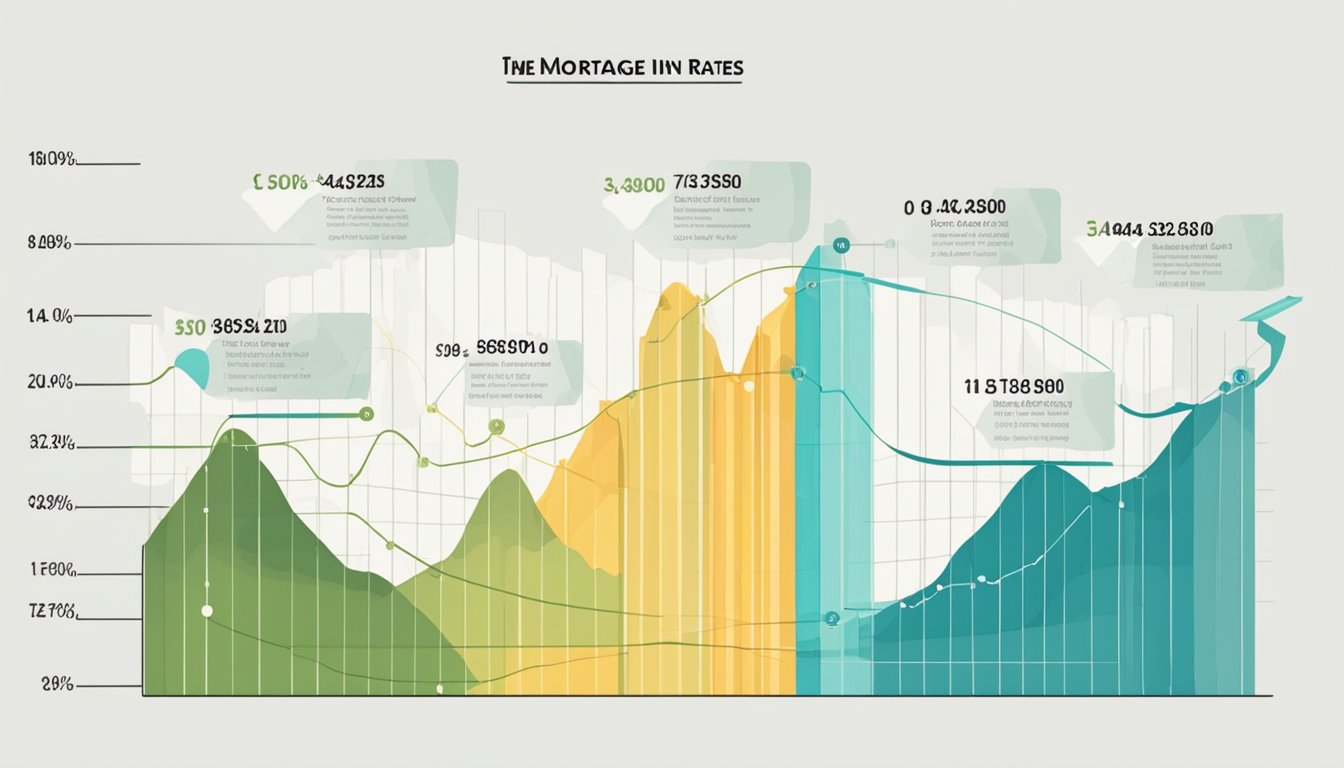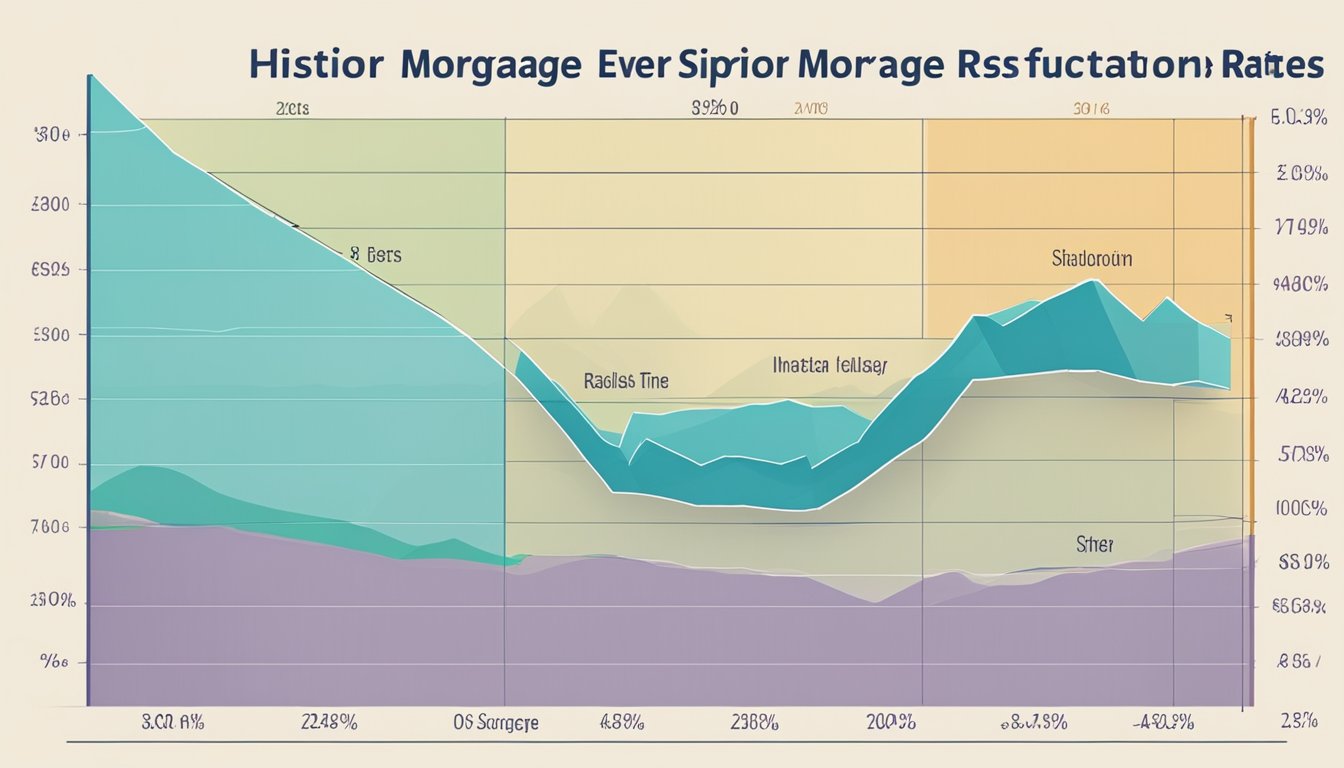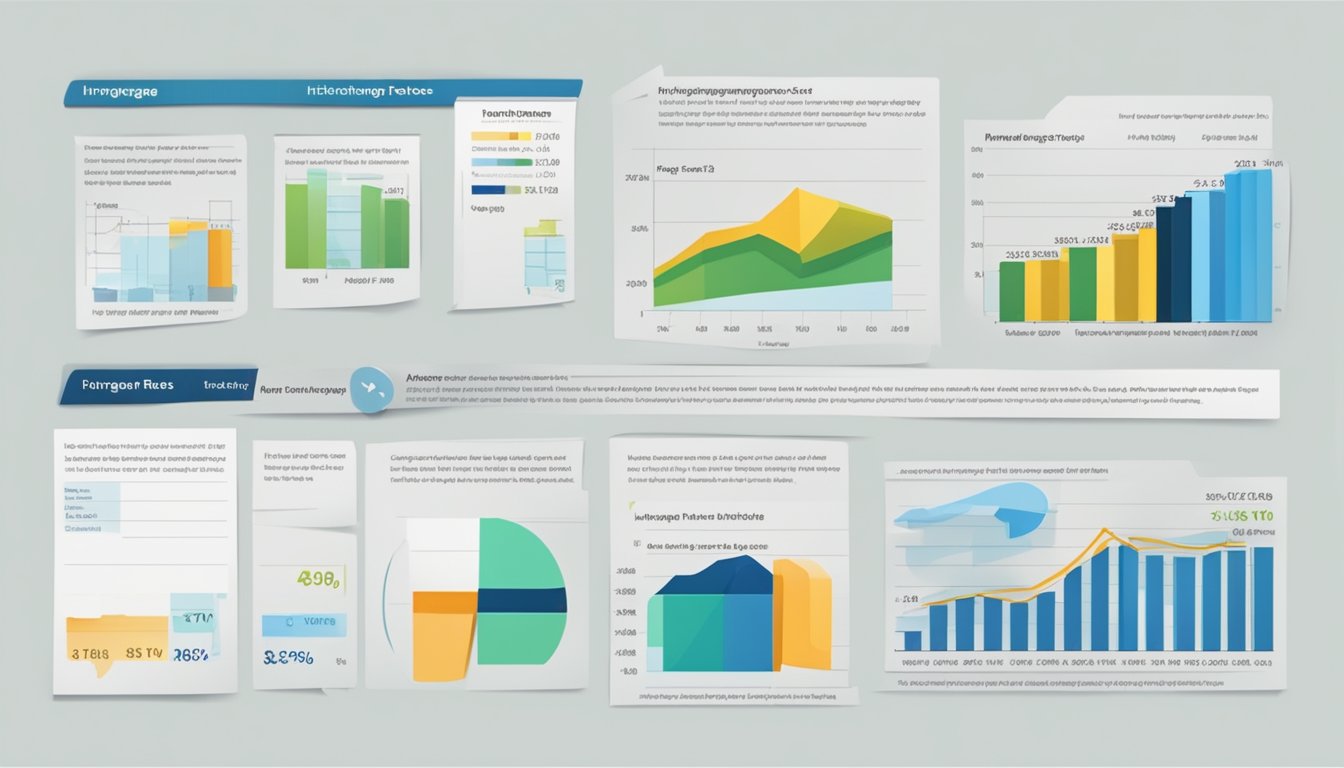If you’re planning to buy a house or refinance your mortgage, understanding historical mortgage interest rates in Singapore can help you make informed decisions. Mortgage interest rates in Singapore have fluctuated over the years, influenced by various factors such as economic conditions, government policies, and global events.

In general, mortgage interest rates in Singapore have been relatively stable compared to other countries. However, there have been periods of volatility, such as during the Asian financial crisis in the late 1990s and the global financial crisis in 2008. Understanding the trends and factors that have influenced historical mortgage interest rates in Singapore can help you anticipate future changes and make better decisions when choosing between fixed and floating rates, or when considering refinancing options.
Key Takeaways:
- Historical mortgage interest rates in Singapore have been influenced by various factors such as economic conditions, government policies, and global events.
- Mortgage interest rates in Singapore have been relatively stable compared to other countries, but there have been periods of volatility.
- Understanding historical trends and factors can help you anticipate future changes and make better decisions when choosing between fixed and floating rates, or when considering refinancing options.
Evolution of Mortgage Interest Rates in Singapore

Mortgage interest rates in Singapore have seen significant fluctuations over the years. This section will explore the historical trends and peaks, the influence of monetary policy, and Singapore’s economic growth impact on mortgage interest rates.
Historical Trends and Peaks
From 1983 to 2024, Singapore’s mortgage interest rates have fluctuated between a high of 12.42% and a low of 1.6%. The rates have seen a gradual decline since the 1980s, with a brief spike in the early 1990s due to the Gulf War. The rates remained stable until the 2008 global financial crisis, which saw a drop in rates due to the Monetary Authority of Singapore’s (MAS) monetary policy.
Influence of Monetary Policy
MAS plays a significant role in regulating the interest rates in Singapore. The central bank uses monetary policy to control inflation and maintain economic stability. During the 2008 financial crisis, MAS cut interest rates to stimulate the economy, leading to a drop in mortgage interest rates. Similarly, in 2020, MAS reduced interest rates in response to the economic impact of the COVID-19 pandemic.
Singapore’s Economic Growth Impact
Singapore’s economic growth has a direct impact on mortgage interest rates. The country’s GDP growth has been steady over the years, with an average growth rate of 6.5% between 1990 and 2019. The growth has led to an increase in demand for housing, which has, in turn, led to an increase in mortgage interest rates. However, during periods of economic slowdown, such as during the 2008 financial crisis, mortgage interest rates tend to drop.
Overall, Singapore’s mortgage interest rates have seen significant fluctuations over the years, influenced by factors such as monetary policy and economic growth. As a homeowner or potential homebuyer, it is essential to stay informed about the trends and peaks in mortgage interest rates to make informed decisions.
Understanding SIBOR, SOR and SORA

If you are in the market for a home loan, it is important to understand the different benchmark rates that are used in Singapore. The three most common benchmark rates are the Singapore Interbank Offered Rate (SIBOR), Swap Offer Rate (SOR), and the Singapore Overnight Rate Average (SORA). In this section, we will discuss the transition from SIBOR to SORA, how SORA affects home loans, and SORA’s role in Singapore’s financial landscape.
SIBOR to SORA Transition
The Monetary Authority of Singapore (MAS) has initiated a transition from SIBOR to SORA. SIBOR is currently the most common benchmark to which home loan interest rates are pegged. However, SIBOR is based on a panel of banks’ estimates of the cost of borrowing from each other. This method of calculation has been deemed less reliable than SORA, which is based on actual transactions in the interbank market. By the end of 2021, all new floating rate loans will be pegged to SORA.
How SORA Affects Home Loans
SORA is calculated based on the weighted average rate of unsecured overnight interbank SGD transactions brokered in Singapore. SORA is a more stable benchmark rate than SIBOR due to its calculation methodology and the fact that it is compiled and validated by the MAS. SORA also provides a more accurate reflection of market conditions, which can result in fairer interest rates for borrowers.
Home loans that are pegged to SORA are reviewed on a monthly basis. The 1-month compounded SORA (1MSORA) is computed by compounding the daily published SORA rate over the historical 1-month period. The 3-month compounded SORA (3MSORA) is computed by compounding the daily published SORA rate over the historical 3-month period.
SORA’s Role in Singapore’s Financial Landscape
SORA is a key benchmark for interest rates in Singapore, and its transition from SIBOR to SORA is a significant move for the country’s financial landscape. The use of SORA as a benchmark rate will increase transparency and reliability in the interbank market, and promote a more efficient and competitive financial system.
The SORA index is published daily by the MAS and is available for public use. This allows borrowers to easily monitor changes in interest rates and make informed decisions about their loans.
In conclusion, the transition from SIBOR to SORA is an important development for Singapore’s financial landscape. SORA is a more reliable benchmark rate than SIBOR, and its use will result in fairer interest rates for borrowers. As a borrower, it is important to understand the different benchmark rates and how they affect your home loan.
Comparing Fixed and Floating Rates

When it comes to choosing between fixed and floating rate mortgages in Singapore, there are several factors to consider. Fixed rate mortgages offer predictability with consistent interest payments, while floating rate mortgages can fluctuate based on market conditions.
Benefits of Fixed Rate Mortgages
One of the main benefits of fixed rate mortgages is that they offer stability and predictability. With a fixed rate mortgage, you know exactly how much you will be paying each month, which can help you budget and plan for the future.
Another advantage of fixed rate mortgages is that they protect you from rising interest rates. If interest rates go up, your mortgage payments will not change, which can save you money in the long run.
Exploring Floating Rate Options
Floating rate mortgages, on the other hand, offer more flexibility and can be a good option if you expect interest rates to go down. There are several types of floating rate mortgages available in Singapore, including board rates, SORA floating rates, and FHR (fixed deposit rate) loans.
Board rates are set by individual banks and can change at any time. SORA (Singapore Overnight Rate Average) floating rates are based on the volume-weighted average rate of borrowing transactions in the unsecured overnight interbank SGD cash market in Singapore. FHR loans are pegged to the fixed deposit rates of the bank.
It’s important to note that floating rate mortgages can be more risky than fixed rate mortgages, as your mortgage payments can go up if interest rates rise. However, if you’re willing to take on some risk, a floating rate mortgage can be a good option if you expect interest rates to go down.
In summary, when choosing between fixed and floating rate mortgages in Singapore, it’s important to consider your financial situation, your risk tolerance, and your expectations for interest rates. While fixed rate mortgages offer stability and predictability, floating rate mortgages can be more flexible and offer the potential for savings if interest rates go down.
The Role of Banks and Financial Institutions

Mortgage Loans and Finance Companies
When it comes to purchasing a new property, most people in Singapore rely on a mortgage loan to finance their purchase. Mortgage loans are offered by banks and finance companies in Singapore. Banks are the major providers of mortgage loans in Singapore, but finance companies also play a significant role in the industry.
Finance companies are financial institutions that specialize in providing credit to consumers. They offer a range of loan products, including personal loans, car loans, and housing loans. Unlike banks, finance companies do not have access to funds from the central bank. As a result, they rely on borrowing transactions in the market to fund their lending activities.
Mortgage loans are one of the most popular loan products offered by banks and finance companies in Singapore. These loans are designed to help people purchase a property by providing them with the necessary funds to do so. The loan amount is typically based on the value of the property being purchased, and the borrower’s ability to repay the loan.
Impact of Banks on Interest Rates
Banks play a significant role in determining interest rates for mortgage loans in Singapore. The interest rates offered by banks are influenced by a variety of factors, including the level of liquidity in the market, the performance of the economy, and the demand for credit.
Banks in Singapore are required to follow guidelines set by the Monetary Authority of Singapore (MAS) when setting interest rates for mortgage loans. The MAS is the central bank of Singapore and is responsible for regulating the financial industry in the country.
Interest rates for mortgage loans in Singapore have been historically low, but they have been rising in recent years. This is due to a variety of factors, including changes in the global economy, rising inflation, and changes in the demand for credit.
In conclusion, banks and finance companies play a significant role in the mortgage industry in Singapore. Mortgage loans are a popular loan product offered by these institutions, and interest rates for these loans are influenced by a variety of factors. As a borrower, it is important to understand how these factors impact interest rates and to shop around for the best loan product that meets your needs.
Future Outlook and Refinancing Strategies

Forecasting Interest Rate Volatility
As you consider refinancing your mortgage in Singapore, it’s important to keep an eye on interest rate trends and volatility. While interest rates have remained relatively stable in recent years, it’s always possible for them to fluctuate in response to economic conditions and other factors.
To get a sense of what interest rates might do in the future, it’s a good idea to consult with financial experts and stay up-to-date on market news. With this information in hand, you can make informed decisions about when to refinance your mortgage and take advantage of favourable interest rates.
When to Consider Refinancing
If you’re looking to save money on your mortgage payments, refinancing can be a smart strategy. By refinancing your mortgage, you may be able to secure a lower interest rate and reduce your monthly payments.
However, it’s important to consider the costs associated with refinancing, such as closing fees and other expenses. Depending on your situation, it may take several years to recoup these costs through lower mortgage payments.
When deciding whether to refinance, it’s important to weigh the potential advantages against the costs and consider your long-term financial goals. With careful planning and a clear understanding of your options, you can make the most of refinancing and achieve greater financial stability in the years ahead.
Frequently Asked Questions

What has been the peak of mortgage interest rates in Singapore’s history?
You might be surprised to learn that the highest recorded mortgage interest rate in Singapore’s history was a whopping 18.5% in 1981. This was a result of the global oil crisis and high inflation rates, which caused interest rates to skyrocket.
How have housing loan rates changed over time in Singapore?
Housing loan rates in Singapore have fluctuated over time, with the lowest rates being around 1.6% in 2017 and the highest being 18.5% in 1981. Overall, rates have trended downwards since the 1980s, but have experienced some volatility in recent years due to global economic factors.
Can you trace the evolution of the SORA rate in Singapore?
Yes, the Singapore Overnight Rate Average (SORA) has been tracked since 2005. It has since become the benchmark rate for financial products in Singapore, including housing loans. SORA is based on the volume-weighted average rate of borrowing transactions in the unsecured overnight interbank SGD cash market in Singapore between 8am and 6.15pm (Singapore time).
Where might one find a comprehensive chart of Singapore’s interest rates?
If you’re interested in seeing a comprehensive chart of Singapore’s interest rates, HousingLoanSG provides a SIBOR/SORA historical chart that shows interest rates from 1986 to the present day. This chart is updated regularly and can be found on their website.
What’s the average rate for home loans in Singapore historically?
Historically, the average rate for home loans in Singapore has been around 2-3%, although there have been periods where rates have been much higher or lower than this. It’s important to keep in mind that this is just an average and individual rates can vary based on a variety of factors.
How does the current HDB loan interest rate compare to historical rates?
As of 2024, the current HDB loan interest rate is around 2.6%. This is slightly higher than the historical average of 2-3%, but still relatively low compared to rates in the past. However, it’s important to keep in mind that interest rates can vary based on a variety of factors, so it’s always a good idea to do your research before taking out a loan.




